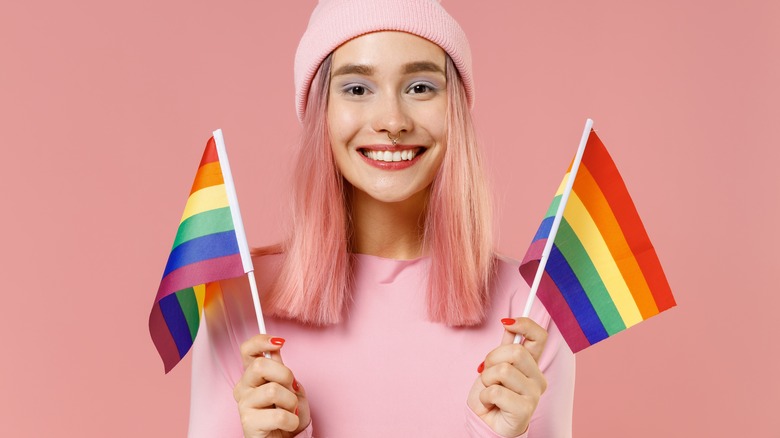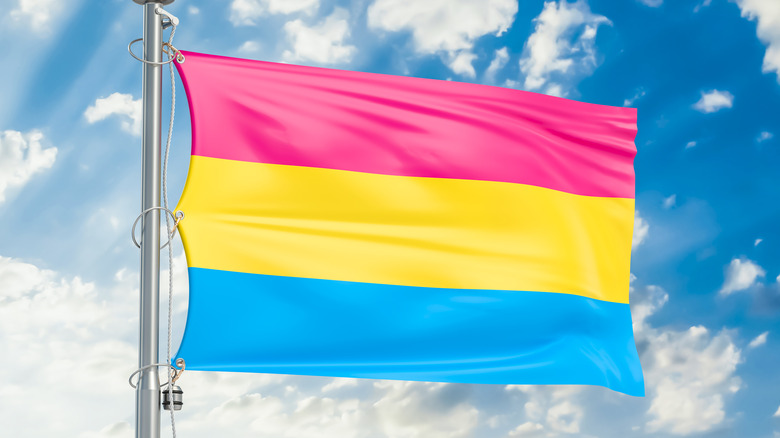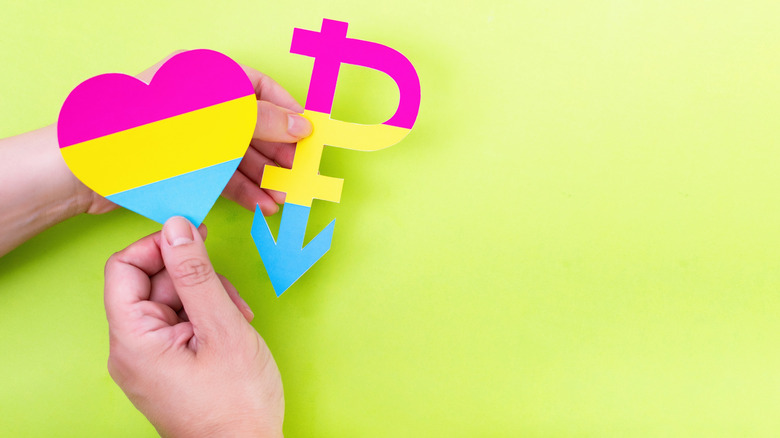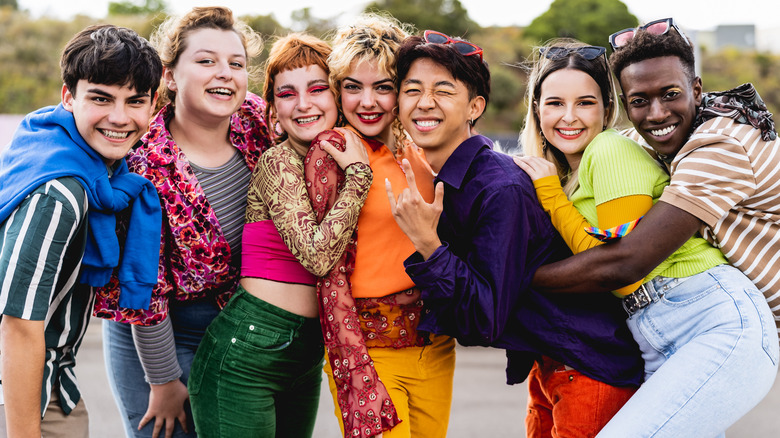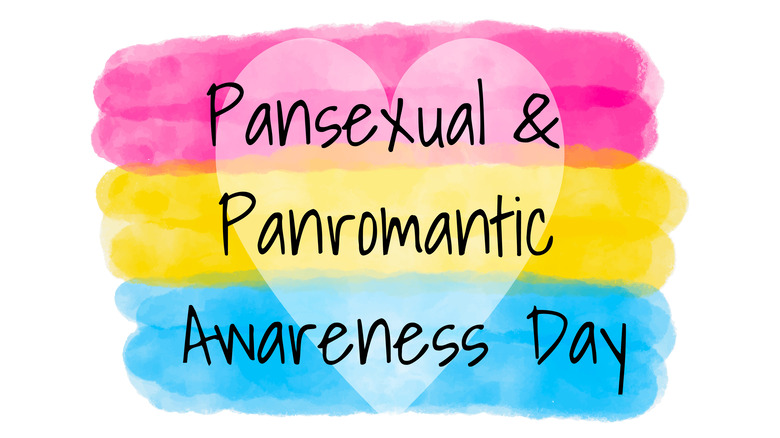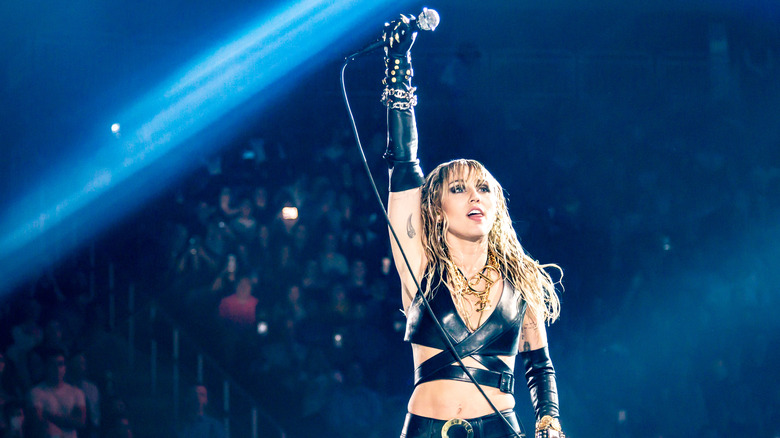Your Guide To Pansexuality
Like a lot of identities, if it's not ours, we can sometimes be confused as to what it means — especially if we're solely surrounded by heteronormative, cisgender people. But while it's fine to be straight and cis, there's a whole world of sexual orientations and gender identities out there that people identify with and call their own.
"The language we have around [gender identity] is rapidly expanding to accommodate for the wide variety of gender identities and expressions out there," AASECT-certified sex therapist Paula Leech, LMFT, tells Women's Health. "The more we can expose ourselves to the diversity of gender identity and expression out in the world, the more likely we are to find ourselves reflected back with greater clarity."
One type of expression and orientation that's been getting more attention is pansexuality. According to the Human Rights Campaign, someone who is pansexual "has the potential for emotional, romantic or sexual attraction to people of any gender though not necessarily simultaneously, in the same way or to the same degree."
If you've never heard of pansexuality or, after that brief explanation, you're thinking, "hey, I think I'm pansexual," then here's your official guide to the beautiful world of pansexuality.
Pansexuality isn't new
When something is given visibility, it's far too often assumed that it's brand, spankin' new. But just because something is finally being seen and recognized doesn't mean it just fell from the sky last week.
Although the concept of pansexuality has, like all sexual orientations, existed since the dawn of humankind, the actual term didn't come around until the early 20th century. According to the Oxford English Dictionary, the word pansexual was first used in 1914 in the Journal of Abnormal Psychology. Sigmund Freud was of the belief that sex was behind everything people did — shocking, right? — making it the great, all-encompassing motivator. A doctor by the name of J. Victor Haberman deduced, while criticizing psychoanalysis, that what Freud's theory was suggesting was that everyone was essentially pansexual, you know, because "all."
While the etymology of pansexual may be rooted in a negative psychoanalytic term, today, it has a far different meaning where it's embraced as part of the very colorful sexual orientation spectrum.
Pansexuality isn't the same as bisexuality
As the Human Rights Campaign points out in its definition of pansexual, it's sometimes used "interchangeably with bisexual." But while this is the case, it doesn't mean that they're the same.
Bisexuality — hence the bi — originally stemmed from the idea that there were two genders (cis-women and cis-men) and, therefore, those who were bisexual were attracted to both those genders. However, as we've learned, there aren't just two genders. In fact, there's way more — more than five, more than 10, even more than 50! According to MedicineNet, including male and female, there are 74 genders.
If we take those 74 genders and the fact that the prefix pan means "all; completely," it's safe to say that someone who identifies as pansexual has 74 genders to whom they could possibly be sexually attracted. Granted, like any sexualities, it shouldn't be mistaken as some sort of free-for-all. No matter how many genders a pansexual person is into, it doesn't negate the fact that types, values, musical taste, and all the rest of it play a role in that attraction.
Pansexuality isn't the answer to bisexuals' transphobia
When the term pansexuality started to make the rounds it was tapped, by some, as an alternative to the transphobia in the bisexual community, because of the fact that the prefix "bi-" means two and the term felt exclusionary to some folks. So there came about the myth that in identifying as pansexual, those who were attracted to more than one gender could escape the fear of being labeled transphobic because they're attracted to all genders and all sexual orientations. But, of course, this isn't true. Not only are bisexuality and pansexuality separate sexualities, but being bi doesn't inherently make someone transphobic. What makes people transphobic is ignorance (via Bisexual Resource Center).
Fun and important fact: bisexual people can be trans, just as pansexual people can be trans (via Everyday Feminism). Assuming one's sexual orientation automatically makes them anything — phobic or not — is just inaccurate. Even if you don't understand something entirely, it's always best to go into it with an open mind that's free of assumptions.
Pansexuality and panromantic are not the same
Don't let the "pan" in there fool you! Someone who is panromantic is romantically attracted to all gender identities, meaning they're not necessarily sexually attracted to all gender identities like pansexuals. If we start running around thinking "pan" means all or nothing, we do a huge disservice to not just the pan community but ourselves.
"Of course, this doesn't imply that panromantic people are romantically attracted to just about everyone out there. It's just that gender is the last thing that comes to their mind [when it comes to] whether or not they develop feelings for someone," sex educator Dainis Graveris tells Mind Body Green. "No one is off the table when it comes to who they're romantically attracted to."
In fact, to throw another wrench into the beautifully complex world of gender and orientation, not only are pansexuality and panromantic not the same, but someone who is pansexual can be panromantic, and someone can be panromantic and asexual. Mind blown yet?
Pansexuality is more common than you think
In a 2015 interview with Elle, Miley Cyrus came out as pansexual, saying, "I'm very open about it — I'm pansexual. But I'm not in a relationship. I'm 22, I'm going on dates, but I change my style every two weeks, let alone who I'm with." Although she wasn't the first celebrity to come out as pansexual, nor would she be the last, back in 2015, she put a face to a term that had yet to have its breakthrough moment, making it a pretty big deal. In the years that followed, other big names like Cara Delevingne, Demi Lovato, and Janelle Monáe announced their pansexuality.
But, of course, it's not just celebrities who identify as pan. According to a 2018 report by the Human Rights Campaign, 14% of LGBTQIA+ teens identify as pansexual. Granted, those 12,000 participants don't speak for the entire population, but that's still an impressive amount people. It's also an amount that's likely to grow as we continue to open our minds to all the ways attraction and love can develop between humans.
